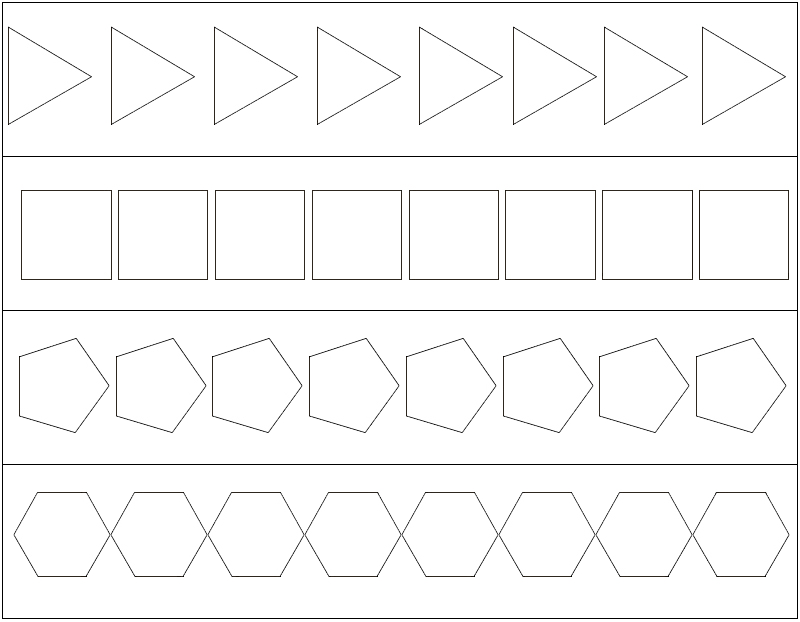More tessellating shapes
This task is about identifying regular tessellations.
How to do this task
In this task you will be investigating whether the shapes below tessellate. A shape tessellates if many of that shape can be put together so that they cover a complete area without any gaps.
- Cut out each set of shapes from the 'Shapes Pages'.
- Use each set of shapes to show how each shape tessellates.
- Cellotape or glue each tessellation onto paper.
- In the box below, circle YES if the shape can tessellate or NO if it cannot.
|
Shape |
Tessellate |
|
|
|
|
|
|
|
|
|
|
|
|
|
|
|








